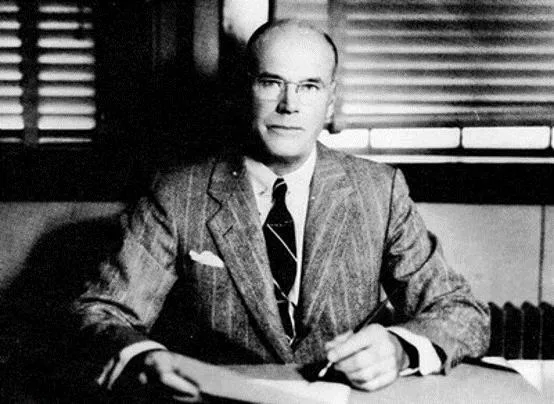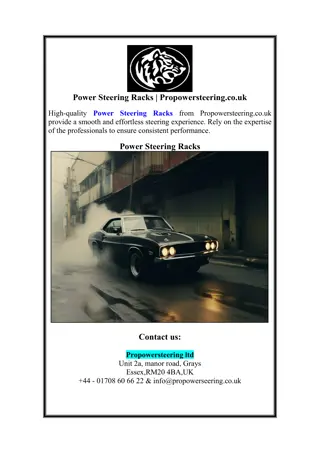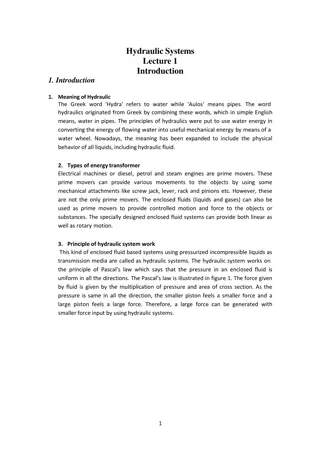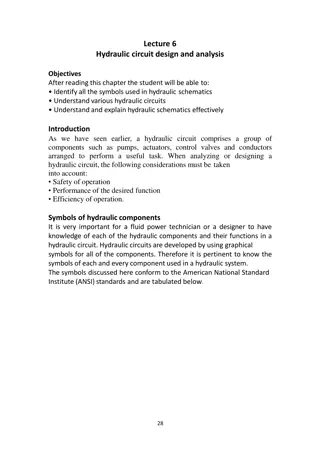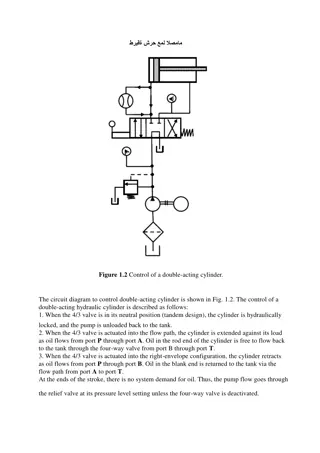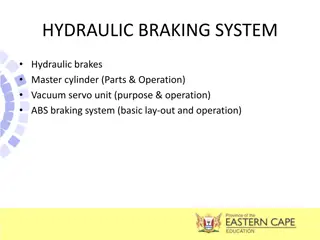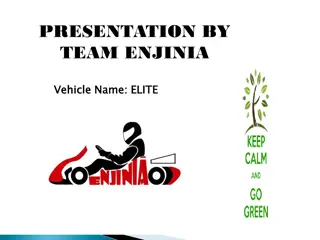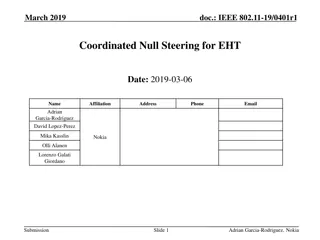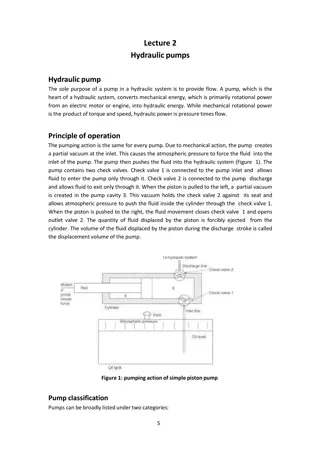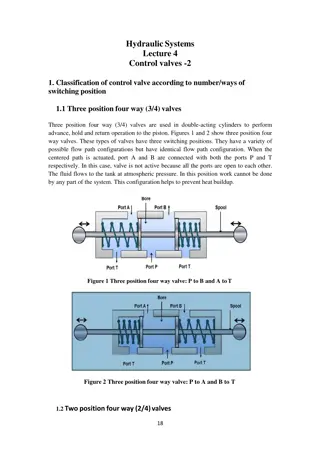Evolution and Components of Hydraulic Power Steering Systems
Hydraulic Power Steering Systems (HPS) have a rich history dating back to the late 19th century, with key advancements leading to their widespread adoption in modern cars. This article explores the origins, development, and key components of hydraulic power steering systems, highlighting their importance in vehicle steering mechanisms. The system's closed-loop design utilizes pressurized hydraulic fluids to facilitate steering control, with additional parts such as hydraulic fluid, reservoirs, pumps, and valves enhancing its functionality and power delivery.
Download Presentation

Please find below an Image/Link to download the presentation.
The content on the website is provided AS IS for your information and personal use only. It may not be sold, licensed, or shared on other websites without obtaining consent from the author. Download presentation by click this link. If you encounter any issues during the download, it is possible that the publisher has removed the file from their server.
E N D
Presentation Transcript
HYDRAULIC POWER STEERING SYSTEM (HPS)
HISTORY o Power steering have been around for a very long time, like hundred years long. The first ever hydraulic power steering was awarded a patent in 1876. It was then improved by Frederick W. Lanchester in 1902. o In 1926, Francis Davis became the first person to successfully fit a hydraulic power steering unit into a automobile. Francis Davis is the father of hydraulic power steering.
HISTORY o In 1951, Chrysler is the first car manufacturer to make power steering unit commercially available. It was available to the public through their passenger car the Chrysler Imperial. o Soon after, many other cars manufacturers such as General Motors, Toyota and Honda quickly came up with their own variation of power steering and implemented them. And that brings us to where we are now. In 21st century, virtually all cars are now equipped with power steering. Chrysler Imperial 1951 is the first commercial passenger car that is equipped with a hydraulic power steering unit.
BASIC STEERING SYSTEM These 3 components work together to give you the ability to steer your car.
TYPES OF STEERING SYSTEMS
The hydraulic power steering system is a closed loop system that uses pressurized hydraulic fluids for changing the wheel angle of front wheels based on steering angle. It contains a hydraulic pump driven by a belt, valves, cylinder, reservoir and a driver control mechanism(rack & pinion/steering gearboxes). HYDRAULIC HYDRAULIC STEERING (HPS) POWER POWER STEERING (HPS)
HYDRAULIC POWER HYDRAULIC POWER STEERING STEERING
HYDRAULIC POWER HYDRAULIC POWER STEERING(HPS) STEERING(HPS) Hydraulic power steering have a few additional parts to supply the extra power. We are talking about : Hydraulic fluid Steering fluid reservoir Steering pump Rotary Valve Hydraulic Chamber
A hydraulic fluid or hydraulic liquid is the medium by which power is transferred in hydraulic machinery. Common hydraulic fluids are based on mineral oil. Power steering fluid is a sub type of hydraulic fluid. Most are mineral oil or silicone based fluids, while some use automatic transmission fluid, made from synthetic base oil. Hydraulic Hydraulic fluid fluid Use of the wrong type of fluid can lead to failure of the power steering pump.
Steering Steering fluid fluid reservoir reservoir It holds the fluid, and supplies them to the steering pump through rubber hoses.
Steering Steering pump pump When car s engine is running, the engine belt turns in a loop and that also turns the steering pump. With that, the pump pulls the steering fluid from the steering fluid reservoir and pressurizes them. We put low pressure steering fluid in, and high pressure steering fluid comes out of the other end. These high p ressure steering fluid then leaves the steering pump, th rough the steering hoses and into the steering rack, spe cifically into the rotary valve.
Rotary Rotary Valve Valve A rotary valve is a highly sensitive metal casing with strategically placed holes that redirects the steering fluid either back to the steering pump or into the steering rack. If the steering wheel is in its original position, the rotary valve redirects the steering fluid back to the steering pump and nothing happens. The cycle of steering fluid moving from reservoir to pump and to rotary valve just keeps repeating itself. But when the driver turns the steering wheel, the rotary valve opens up and steering fluid from the steering pump gets redirected. This time, it doesn t go back to the steering pump but it exits the rotary valve through the fluid lines and into one of the hydraulic chamber of the steering rack.
When there is more steering fluid on one side of the hydraulic chamber, it creates a pressure differential across the chamber. The steering fluid then pushes the hydraulic piston towards the weaker side of the hydraulic chamber and the steering rack moves accordingly. Hydraulic Hydraulic Chamber Chamber
REFERENCES REFERENCES https://dsauto.com.my/en/2018/11/19/car-steering-system/#basic-car-steering-system-component https://dsauto.com.my/en/2018/11/27/hydraulic-power-steering-explained/ https://hydraulicsuspension.com/hydraulic-power-steering/ https://tr.wikipedia.org/








